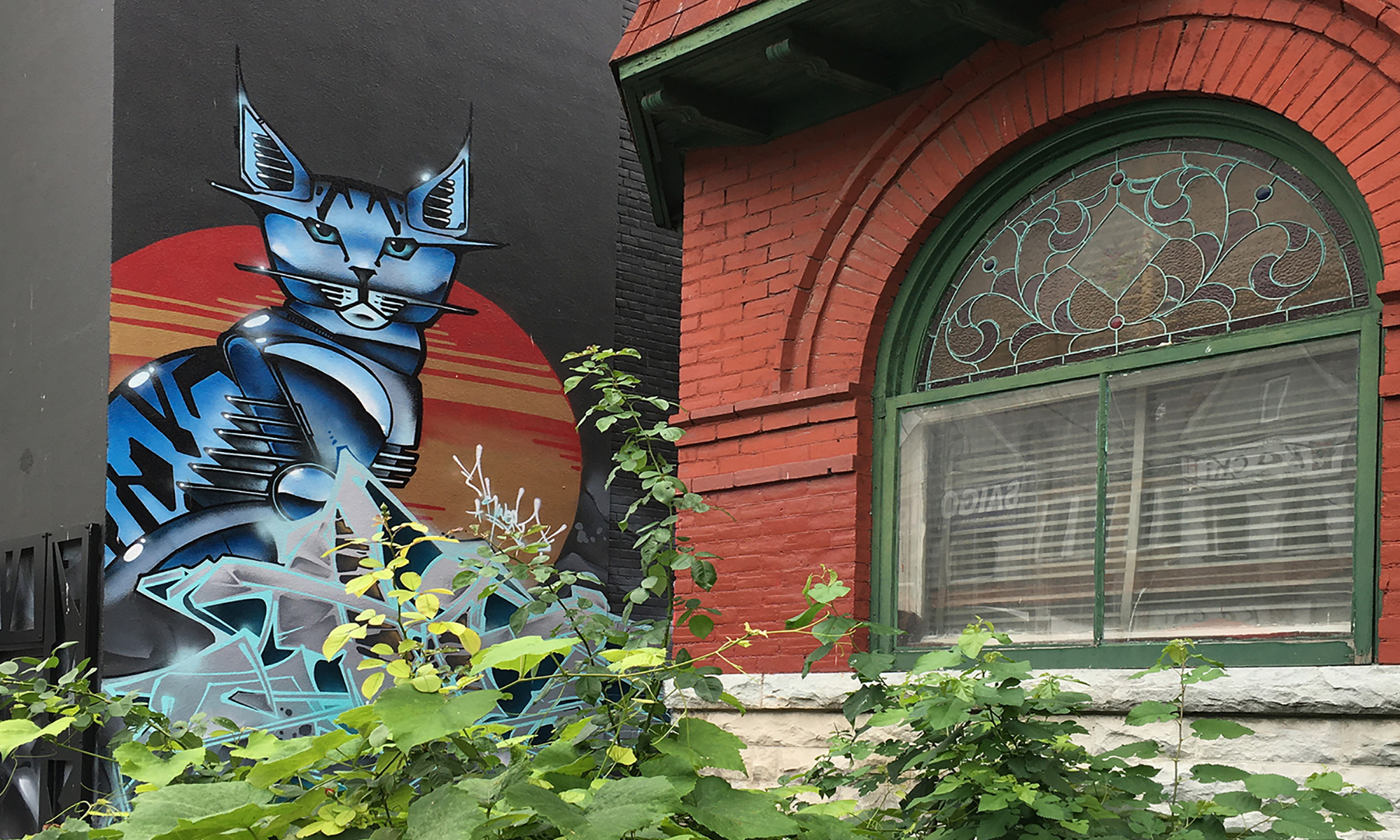
In the early 1870s, “Spadina [still] had not more than two dozen houses north of Queen . . . [and] College, west of Spadina, was thickly interspersed with gardens, corn patches , and vacant land;” by 1894, “the area that had been Bellevue was heavily populated.”[i] Many of Kensington’s houses were built in the 1870s and 1880s; the 1880s saw a building boom, coupled with the growth of local services such as streetcars, which peaked in 1889.[ii] In 1890, “services and building almost ceased when Canada was thrown into deep economic depression.”[iii] These trends demonstrate, as seen with Robert Brittain Denison’s subdivision of plots, that the local economy was a strong shaping force for Kensington Market from its very inception. On more than one occasion Kensington houses remained empty for a few years before selling, a consequence of slumps in the economy.[iv] Lane ways Kensington Place and Fitzroy Avenue are examples of the “concept of a home behind a home,” which was a strategy for providing cheaper housing; this phenomenon shows strong correlation with economic fluctuation: no homes are recorded on Kensington Place prior 1890 depression.[v]
The population of Kensington reflected a Toronto which, at the time, had a population that was over 90% English, Scottish, or Irish in origin.[vi] The initial residents of the Kensington area were immigrants from the British Isles who worked as labourers and skilled tradesmen, establishing early on Kensington’s reputation as “an immigrant reception area.”[vii] As the Kensington area shifted from large estates to small developed plots, and the population density rose, the income bracket of the residents dropped. This demographic shift was not instantaneous, however, and until about 1900 the residents of Kensington ranged from more prosperous professionals who owned respectable homes to poorer labourers and tradesmen who rented their houses.[viii] Kensington residents primarily worked outside of the neighbourhood itself, but usually within walking distance.
The early 1900s marked the beginning of a period of rapid change to the face of Kensington.[x] By 1900 many of the houses in the neighbourhood were owned by landlords and the British settlers who could afford it were moving into more affluent Anglo-Saxon suburbs north of Bloor which offered larger homes and bigger properties.[xi] Their exodus made room in the affordable Kensington neighbourhood for other immigrants, especially Jews coming from ‘The Ward.’
~
All of these aspects of Kensington Market, from Robert Brittain Denison’s initial redivision of plots into subplots to the arrival and subsequent exodus certain immigrant groups, point to one conclusion that has remained true over time: Kensington Market is a product of Toronto’s economic reality.
